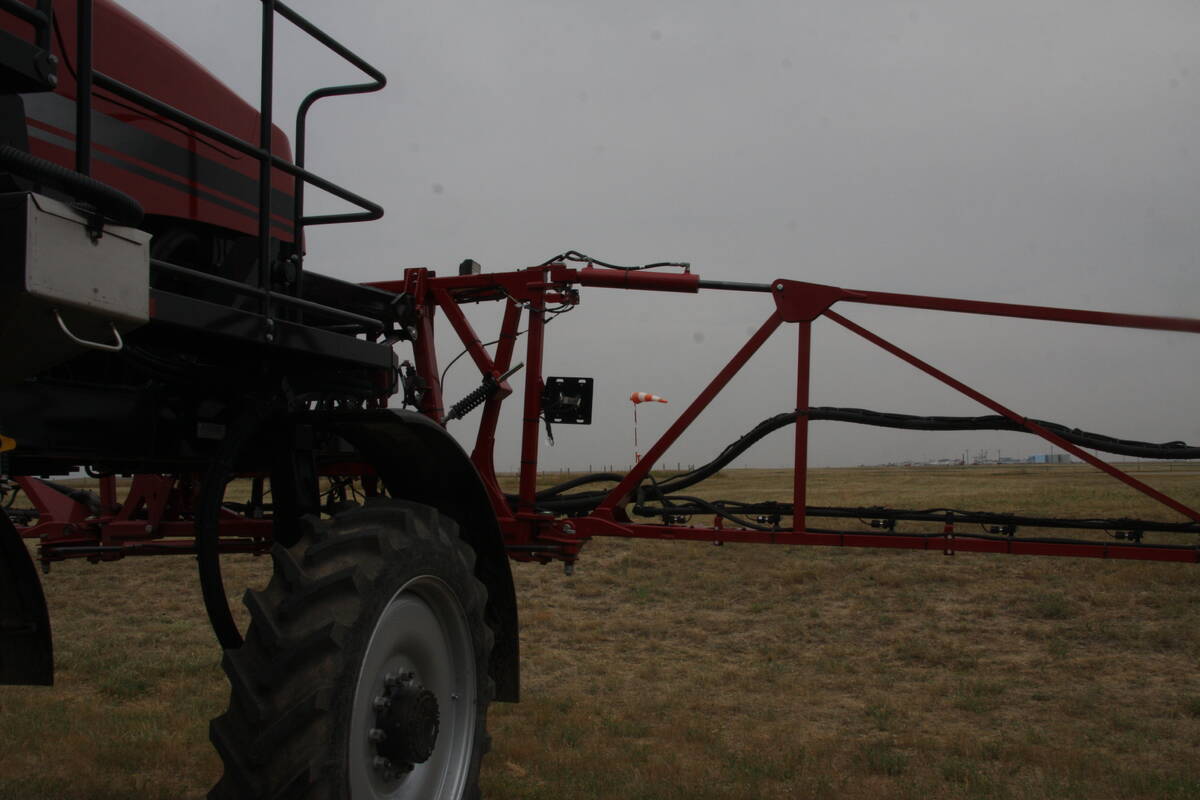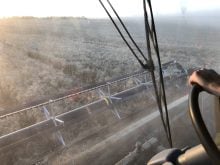New Roundup Ready varieties, better equipment and efficient irrigation have helped family boost yields over the years
COALDALE, Alta. — Few tourists will stop the car to take a picture of themselves in a field of sugar beets, but the lumpy yellow beet with wide curly leaves has been a staple on the VandenElzen farm for more than 50 years.
Cory VandenElzen’s family began growing sugar beets on their current farm in 1970, and the crop has been grown on some piece of their 1,200-acre farm ever since.
“It Is the most expensive crop we grow on our farm, but it is also the one that can bring the most return,” said VandenElzen of Coaldale, one of southern Alberta’s main sugar beet growing areas.
Read Also

More work wanted on removing red tape
REGINA — Canadian farmers risk falling further behind competitors if two main federal agencies don’t become more efficient and responsive…
“The risk is much lower than any other crop. We almost always have a harvest.
“You rarely get a crop insurance claim on sugar beets, so the cost of insurance is cheap. If a hailstorm comes through, you can’t kill them. They are a root crop and the leaves will grow back. You will lose some money on yield and sugar, but you will get a crop.”
VandenElzen’s parents, Adrian and Mary, emigrated from Holland in the 1950s and 1960s, and the family has been in the Coaldale area ever since.
It’s not a large farm by modern standards and is not likely to get much bigger, considering neighbouring land sells for $4 million a quarter. Instead, the family focuses on making the farm more efficient, including growing the latest varieties of sugar beets.
When VandenElzen was young, 18 tonnes an acre was considered normal and 22 tonnes per acre was considered good. Last year, the sugar beet yield on his farm was close to 40 tonnes per acre.
A combination of new Roundup Ready sugar beet varieties, better equipment and efficient irrigation have boosted yields. Old sugar beet varieties needed to be sprayed five or six times to control weeds but also reduced yield by about four to six tonnes an acre. The heavy use of chemicals created resistance in kochia, wild oats and round leaf mallow.
“We could no longer control these weeds. If we hadn’t got Roundup resistant beets, we probably wouldn’t be growing beets in southern Alberta anymore.”
As a director on the Alberta Sugar Beet Growers board, it’s part of VandenElzen’s job to set and enforce the regulations of the 28,000 acres of sugar beets grown on the 200 farms in southern Alberta.
Sugar beets are a regulated crop, like dairy, chickens and eggs. Farmers must have a quota and grow their allocated acreage, or move that contract to a farmer who can grow them. It’s all done to ensure that the Rogers Sugar-owned Lantic Inc. factory in Taber, which is the only sugar beet processing facility in Canada, has a steady supply of beets to turn into sugar.
The family grows 300 acres of beets on the farm each year in the required four-year rotation. Grower regulation means no single farmer can grow more than 1,400 acres of beets to ensure the growing risk is spread across a large region and support smaller family farms.
Sugar beets are normally seeded in mid to late April, and harvest begins in mid September, although the main harvest is in October. In between, water and heat are required to grow a high-yielding crop with plenty of sugar.
“Irrigation is the biggest factor of why it is grown in this area.”
Sugar beets need about 16 to 18 inches of water a year for seedbed preparation, growing and moisture to make harvest easier.
Drought throughout much of southern Alberta forced his local irrigation district to reduce his water allocation to eight inches, but he hopes it may be boosted to 12 inches.
Good spring moisture has set the crop to a good start, but VandenElzen knows he needs to carefully manage the water allocated to his farm this summer. Except for the corners of his square fields, all his land is irrigated with large irrigation pivots for his bean, sugar beet, grain and alfalfa crops.
“Heat is what builds a sugar beet crop,” he said.
“The crop is mostly built in July and August with the heat. We will start pouring water on the beets in the summer.”
Ideally, the sugar beets will have 19 to 20 per cent sugar content, of which 17 to 17.5 per cent is considered extractable for the factory. The farmers sell tonnes of beets, but are paid on the sugar content. The higher the sugar content, the higher payment, based on a contract negotiated by the board and the Lantic processor.
The factory begins its harvest operations in September in an attempt to process 6,000 tonnes a day of the almost one million tonnes of beets grown each year.
Because sugar content is higher in October, farmers are paid a premium to deliver beets in September. Farmers receive 70 per cent of their payment for their sugar beets in November and the rest is paid throughout the year.
Once the sugar beets are dumped into one of seven piling sites, they belong to the Lantic factory, which processes them into sugar.
VandenElzen said the farmers and board have a good relationship with the Lantic officials and the Taber factory.
“We are a stable, relatively inexpensive source of sugar.”

















